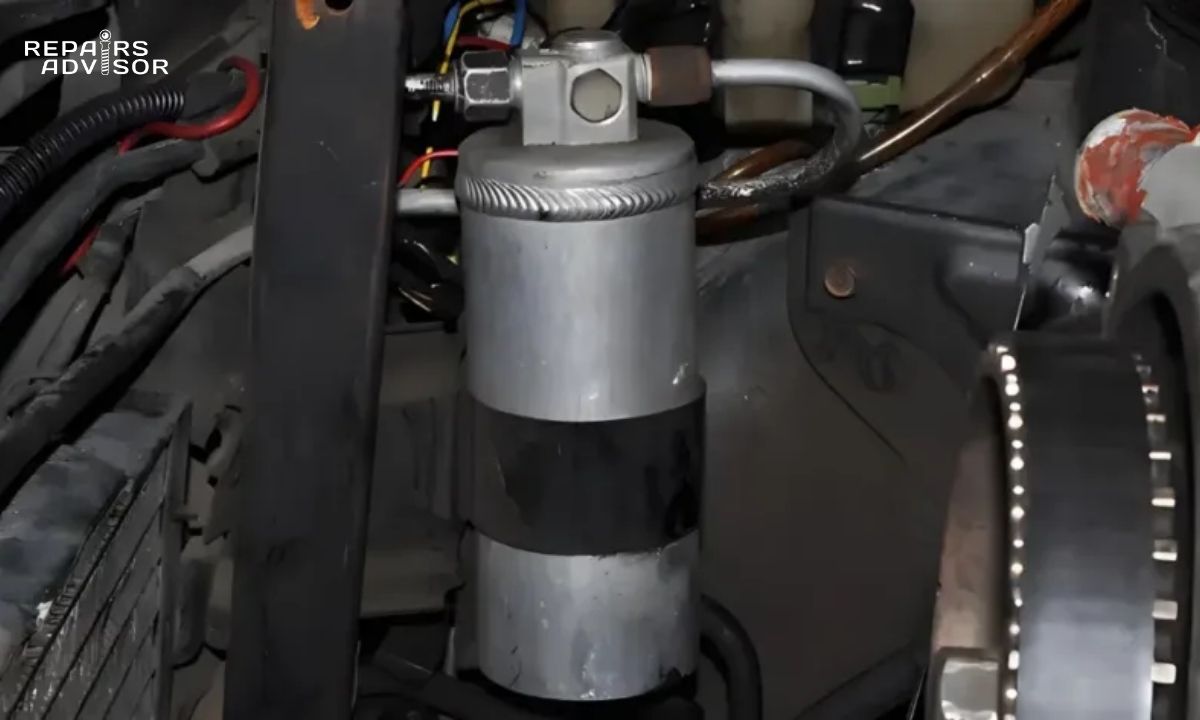Ever wonder how your car’s A/C keeps that air so perfectly crisp and cold? Beyond the compressor and condenser, there’s a vital unsung hero: either the AC accumulator or receiver-drier. These two parts aren’t interchangeable, and your car will only have one, but they share the same super important job: to be the moisture and particulate filter for your entire A/C system!
Here’s the lowdown: As refrigerant cycles through your A/C, it can pick up tiny bits of water. But watch out! Water and refrigerant are a toxic combo – they react to form nasty acids that can corrode your system from the inside out. Plus, those water particles can freeze into ice crystals, causing annoying blockages and stopping the cool air flow dead in its tracks. And here’s a big one: the refrigerant must be in a fully gaseous state before it hits the compressor. That’s where our heroes come in!
- The Accumulator: If your car has an accumulator, it’s usually found right before the compressor. Refrigerant (which might be part liquid, part gas) enters this metal canister. Inside, it goes through a desiccant material (like a super-absorbent sponge for moisture) and a filter. Any liquid refrigerant falls to the bottom to vaporize, while the already gaseous, now moisture-free refrigerant, exits directly to the compressor. Smart, right?
- The Receiver-Drier: If your car uses a receiver-drier, it’s typically located just after the condenser. It’s generally smaller than an accumulator but does the same magic trick: as the gaseous refrigerant passes through, it gets dried by the desiccant and filtered, ensuring only pure, moisture-free gas moves on.
So, these parts are like the silent guardians of your A/C’s health, constantly battling moisture and debris. But what happens when they fail?

Is Your AC Accumulator or Receiver-Drier on the Fritz?
Unless you’re a seasoned A/C pro, we strongly recommend leaving these repairs to a qualified mechanic. The A/C system operates under high pressure and has many intricate moving parts, making DIY troubleshooting quite complex (and potentially dangerous!). But knowing these signs can help you talk to your mechanic like a pro:
- You Hear Annoying Rattling Sounds When the A/C Is On:
- Ever hear a faint “clink, clink” or “rattle, rattle” coming from under the hood when your A/C is running? This can be a sign that internal components within your accumulator or receiver-drier have come loose or are damaged. Of course, it could also be a loose hose, fitting, or even a struggling compressor, but the rattling from these parts is definitely a strong suspect!
- You Spot Mysterious Refrigerant Leaks Under the Car or Hood:
- If you’re seeing puddles or greasy residue that looks like oil (but isn’t engine oil) under your car, especially near A/C lines, your accumulator or receiver-drier might be a culprit. A malfunctioning unit can develop cracks or faulty seals, allowing that pressurized refrigerant to escape. Keep in mind, leaks can pop up anywhere in the A/C system, so a pro will need to track it down.
- Your A/C Isn’t Blowing as Cold as It Should (Or At All!):
- Ah, the most frustrating symptom! If your A/C starts feeling more like a fancy fan than a cooling machine, a clogged accumulator or receiver-drier could be to blame. When these parts get blocked up, they prevent the proper flow of refrigerant, stopping that wonderfully refreshing cold air from reaching your vents. It’s like trying to drink through a clogged straw – nothing gets through!
Dealing with a Bad Accumulator or Receiver-Drier: The Smart Fix
Good news! Because the accumulator or receiver-drier acts as the crucial moisture and particulate filter, the most effective solution for most problems is usually a straightforward replacement. It’s generally an inexpensive part, and swapping it out is a fantastic investment in the long-term health and efficiency of your entire A/C system.
Here’s a pro tip (and a vital warning!): Once you expose one of these components to the outside air (by disconnecting it or even just opening a fitting), its internal moisture-absorbing desiccant material immediately starts absorbing moisture from the air. This effectively destroys any remaining moisture-absorbing qualities it may have had. That’s why, if you open the system for any major A/C work, like replacing the compressor, condenser, or other components, you must also replace the accumulator or receiver-drier at the same time. It’s a cheap insurance policy to prevent future moisture damage!

Your Repair Advisor’s Take:
Your A/C accumulator or receiver-drier might be small, but it’s a mighty guardian against moisture and debris, ensuring your A/C system runs efficiently and lasts longer. Ignoring the signs of its failure like rattling noises, leaks, or lukewarm air can lead to bigger, more expensive problems down the road, potentially damaging your valuable A/C compressor!
Don’t wait until your A/C completely gives up! A failing accumulator or receiver-drier is a sign that your A/C system needs some professional love.
For accurate diagnosis and a refreshingly effective repair, always consult a qualified automotive A/C technician. They have the specialized tools (like leak detectors and vacuum pumps) and expertise to correctly identify the issue and ensure your A/C system is properly evacuated, recharged, and blowing ice-cold again! Get ready to chill out – schedule an A/C system diagnostic today!
